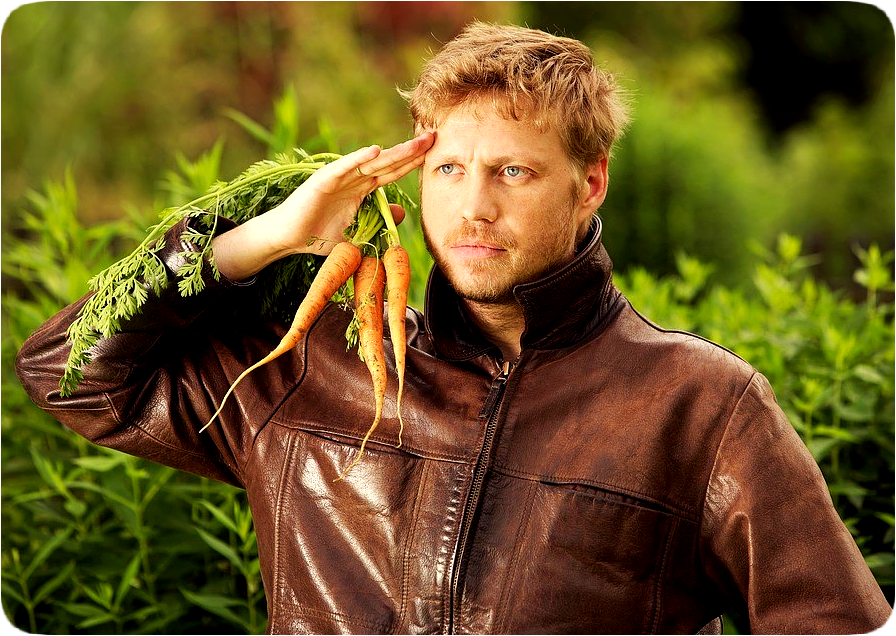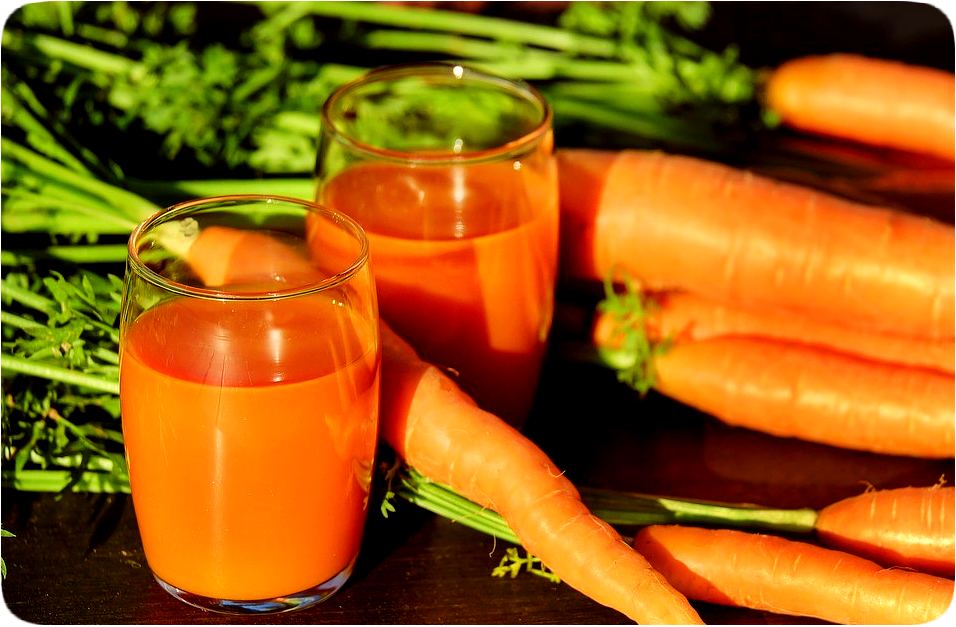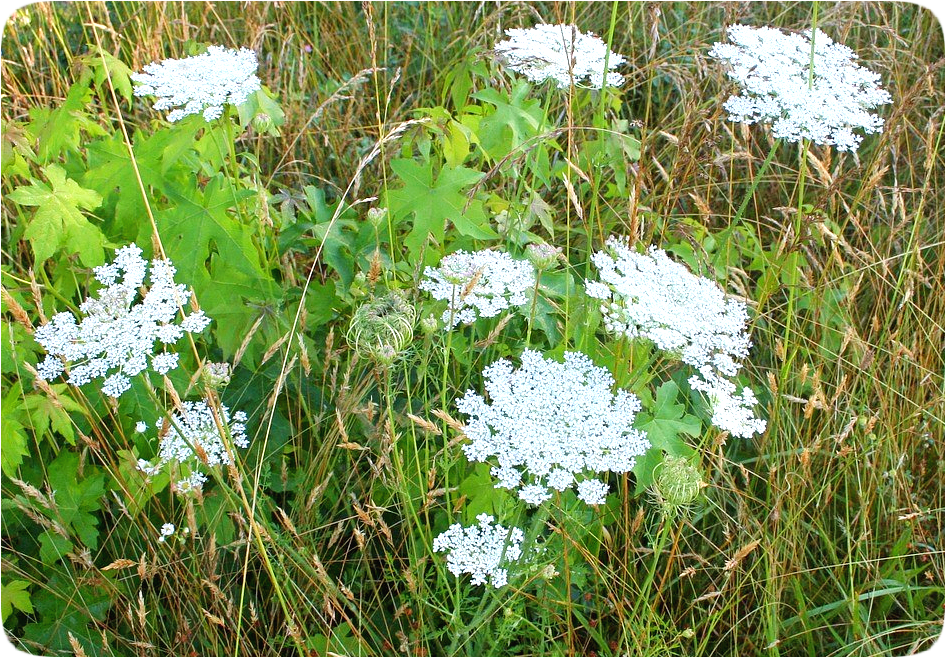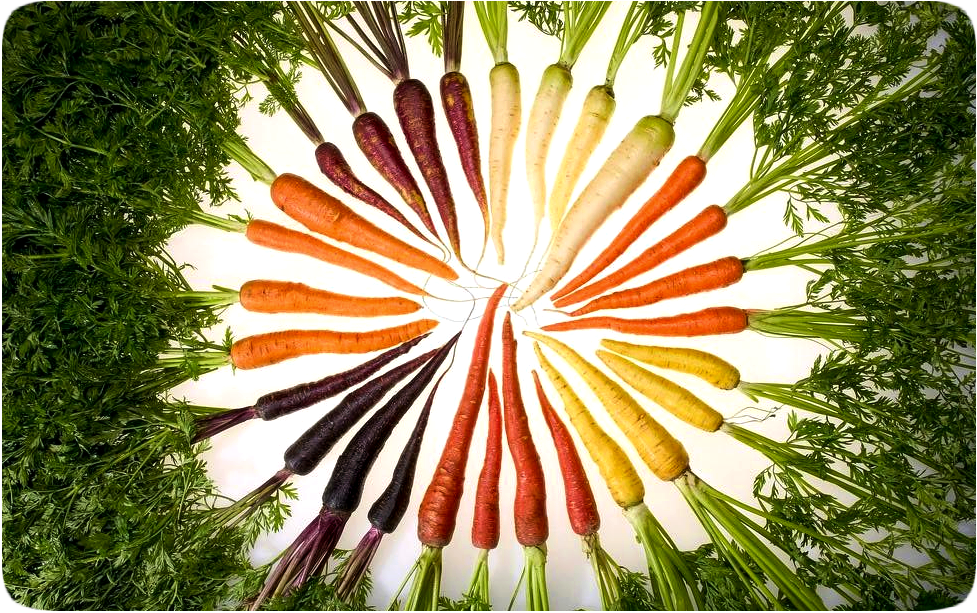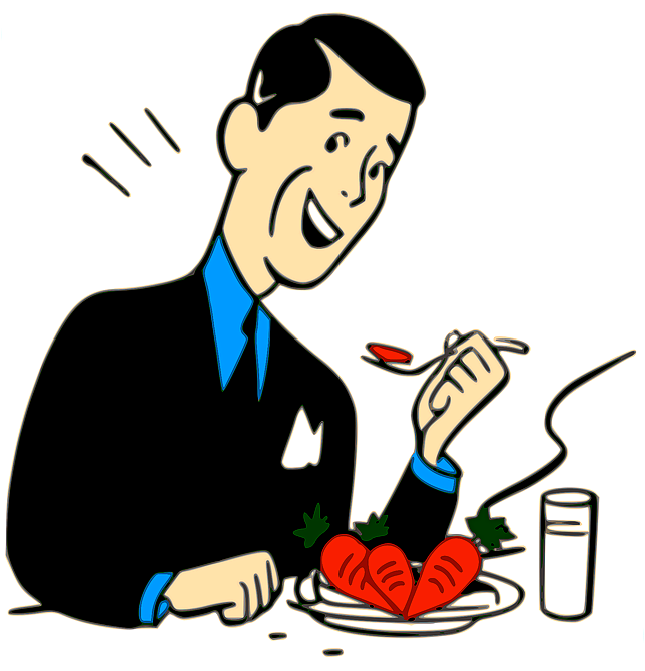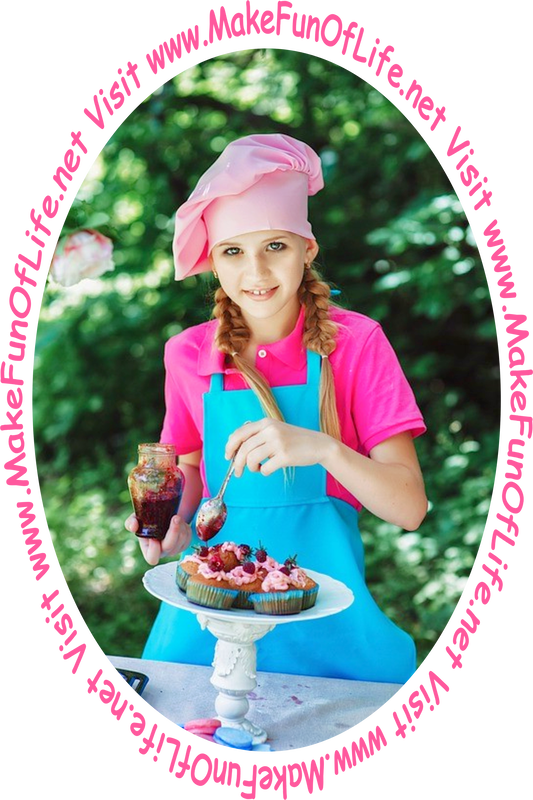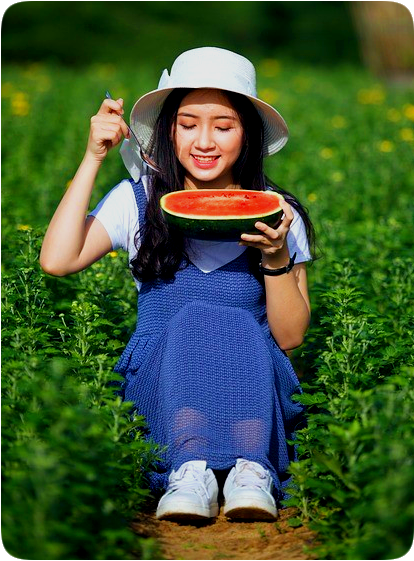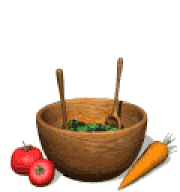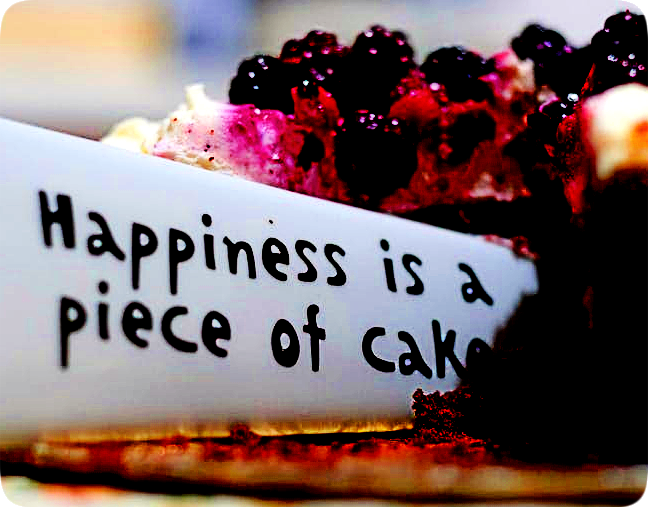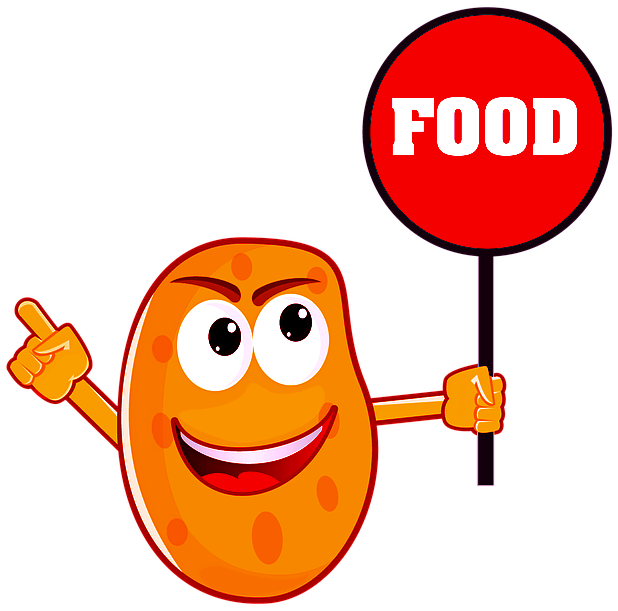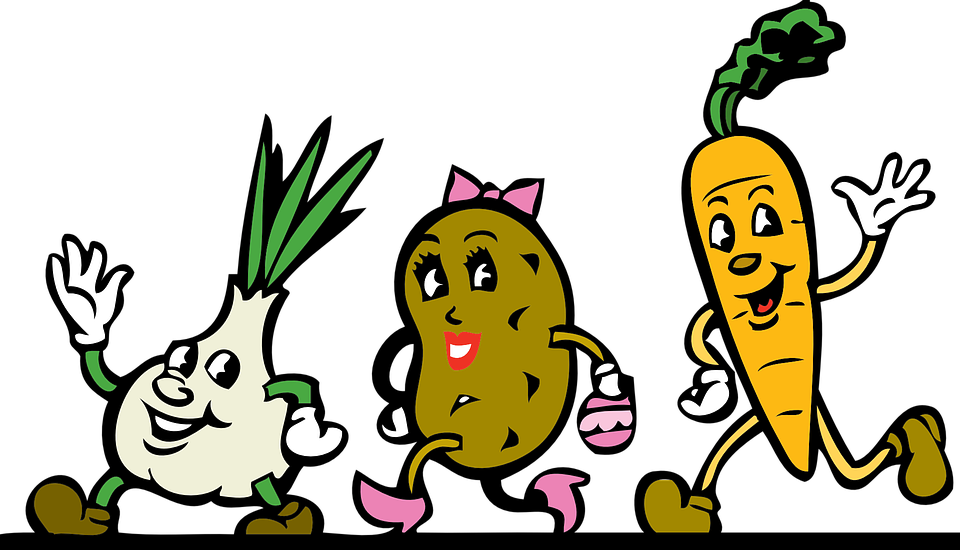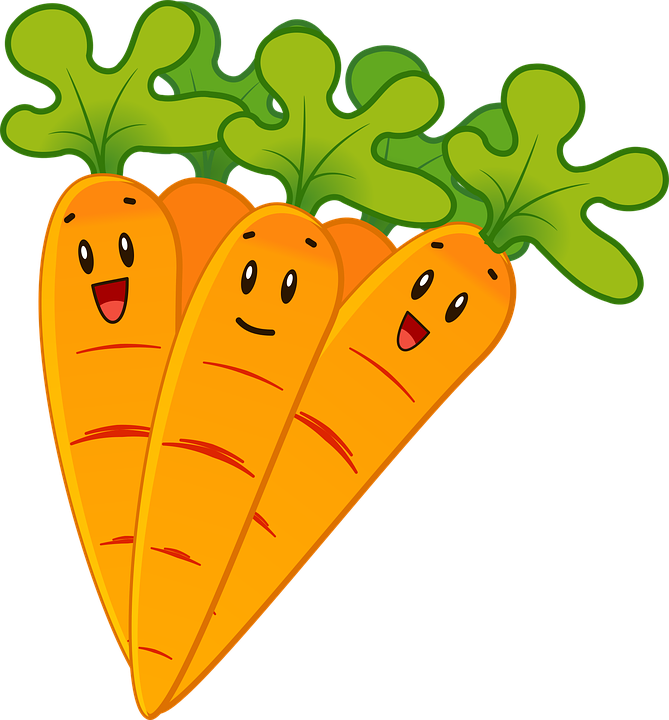And so now we discuss the many and varied merits of carrots . . .
Carrots are grown as food and medicine all over the world. All parts of the carrot plant are edible to humans. The tubular taproots of carrots are a vegetable for culinary purposes, and can be eaten raw or cooked. The green leaves of carrots are edible as a leaf vegetable, though less commonly eaten by humans. The root, leaves, and seeds of carrots are used for their supposed curative benefits in treating various maladies.
Ethel: What did the carrot say to the tomato?
Esther: I don’t know - I didn’t even know carrots could talk!
Carrot plants are classified as herbs, which are plants that can be grown for either their green leaves or flowers. However, carrots are also grown for their vegetable root. They are a member of the Umbelliferae family, which includes caraway, carrots, celery, cilantro, dill, fennel, and parsley. The leaves of carrots can grow to be as much as 1 meter (3.28 feet) in height. Their main root typically grows to be between 4 and 10 inches in length.
Riddle: I grow underground, I am commonly orange, but I am also found in a variety of other colors, and I am good to eat - what am I?
Solution: I am a vegetable called a carrot.
Cultivated carrots contain about 88 percent water, 7 percent sugar, 1 percent protein, 1 percent fiber, 1 percent ash, and 0.2 percent fat. One cup of raw carrots contains about 52 calories. Orange carrots get their color from beta carotene, a red-orange pigment found in some plants and fruits. Beta carotene is a substance that is converted to Vitamin A in the human body. Carrots have more beta carotene than any other vegetable. One-half cup of cooked carrots contains four times the recommended daily intake of Vitamin A as beta carotene.
Jimmy: Why is a carrot orange and pointy?
Jamie: Because if it were red and round it would be a tomato!
Carrots can be prepared for eating in a variety of ways. The root can be eaten raw as is, and it can be grated, sliced, or juiced. The root can also be boiled, pulped, mashed, puréed, fried, steamed, stewed, or baked. Carrots can be dehydrated or deep-fried to make chips, flakes, and powder. Carrots are used in stir-fries, salads, soups, and stews, or are added to baby foods and pet foods. The natural sugars and sweetness of carrots allow them to be used in carrot cakes and other desserts, jams, and juices. Shredded or finely diced carrots can be added to mara nara sauces, or red sauces, such as spaghetti sauce, to mellow the acidity of the tomatoes. The best seasonings for cooked carrots are cinnamon, cloves, marjoram, nutmeg, rosemary, and sage.
Carrots are grown as food and medicine all over the world. All parts of the carrot plant are edible to humans. The tubular taproots of carrots are a vegetable for culinary purposes, and can be eaten raw or cooked. The green leaves of carrots are edible as a leaf vegetable, though less commonly eaten by humans. The root, leaves, and seeds of carrots are used for their supposed curative benefits in treating various maladies.
Ethel: What did the carrot say to the tomato?
Esther: I don’t know - I didn’t even know carrots could talk!
Carrot plants are classified as herbs, which are plants that can be grown for either their green leaves or flowers. However, carrots are also grown for their vegetable root. They are a member of the Umbelliferae family, which includes caraway, carrots, celery, cilantro, dill, fennel, and parsley. The leaves of carrots can grow to be as much as 1 meter (3.28 feet) in height. Their main root typically grows to be between 4 and 10 inches in length.
Riddle: I grow underground, I am commonly orange, but I am also found in a variety of other colors, and I am good to eat - what am I?
Solution: I am a vegetable called a carrot.
Cultivated carrots contain about 88 percent water, 7 percent sugar, 1 percent protein, 1 percent fiber, 1 percent ash, and 0.2 percent fat. One cup of raw carrots contains about 52 calories. Orange carrots get their color from beta carotene, a red-orange pigment found in some plants and fruits. Beta carotene is a substance that is converted to Vitamin A in the human body. Carrots have more beta carotene than any other vegetable. One-half cup of cooked carrots contains four times the recommended daily intake of Vitamin A as beta carotene.
Jimmy: Why is a carrot orange and pointy?
Jamie: Because if it were red and round it would be a tomato!
Carrots can be prepared for eating in a variety of ways. The root can be eaten raw as is, and it can be grated, sliced, or juiced. The root can also be boiled, pulped, mashed, puréed, fried, steamed, stewed, or baked. Carrots can be dehydrated or deep-fried to make chips, flakes, and powder. Carrots are used in stir-fries, salads, soups, and stews, or are added to baby foods and pet foods. The natural sugars and sweetness of carrots allow them to be used in carrot cakes and other desserts, jams, and juices. Shredded or finely diced carrots can be added to mara nara sauces, or red sauces, such as spaghetti sauce, to mellow the acidity of the tomatoes. The best seasonings for cooked carrots are cinnamon, cloves, marjoram, nutmeg, rosemary, and sage.
Carrot juice contains crystallizable and uncrystallizable sugar, a small quantity of starch, extractine, gluten, albumen, volatile oil on which the medicinal properties of the root depend and which gives carrots their distinctive odor, vegetable jelly or pectin, saline, malic acid, tannins, and an odorless, tasteless principle called carotin.
If people eat too many carrots, will they turn orange? Carotenoids, which are the pigments that makes carrots orange, will give skin a yellow-orange coloration if a large quantity of carrots or foods containing carrots such as vegetable juice blends, are eaten or drunk over a long period of time. The coloration is most noticeable on the palms or soles of feet, and is called carotenemia. There is no need to worry, however, as the condition requires a high amount of carrot consumption and is completely reversible by reducing carrot consumption.
Ed: What vegetable do all other vegetables fear?
Edna: A Halloween scarrot.
Cultivated carrots have a somewhat obscure history, and it is difficult to determine exactly when domestication of the plants first took place. Human language, with its words and their meanings, has developed slowly and somewhat haphazardly. So, for example, in some instances it can be unclear whether people of long ago were writing about carrots or parsnips.
Wild carrots originated more than 5,000 years ago in the part of the world that later became known as the Iranian Plateau, a region that includes present-day Afghanistan, Pakistan, and Iran. None of these countries existed at that time, so it can be accurately stated that carrots are older than any of these countries. Wild varieties of carrots with purple, red, green, black, yellow, and white roots still grow there.
Cultivated carrots with thicker roots, milder and sweeter flavors, and orange color would appear much later as a result of human cultivation.
English botanist William Turner made the term ‘wild carrot’ the official name for the plant in his work, “The Names of Herbes” (1548).
If people eat too many carrots, will they turn orange? Carotenoids, which are the pigments that makes carrots orange, will give skin a yellow-orange coloration if a large quantity of carrots or foods containing carrots such as vegetable juice blends, are eaten or drunk over a long period of time. The coloration is most noticeable on the palms or soles of feet, and is called carotenemia. There is no need to worry, however, as the condition requires a high amount of carrot consumption and is completely reversible by reducing carrot consumption.
Ed: What vegetable do all other vegetables fear?
Edna: A Halloween scarrot.
Cultivated carrots have a somewhat obscure history, and it is difficult to determine exactly when domestication of the plants first took place. Human language, with its words and their meanings, has developed slowly and somewhat haphazardly. So, for example, in some instances it can be unclear whether people of long ago were writing about carrots or parsnips.
Wild carrots originated more than 5,000 years ago in the part of the world that later became known as the Iranian Plateau, a region that includes present-day Afghanistan, Pakistan, and Iran. None of these countries existed at that time, so it can be accurately stated that carrots are older than any of these countries. Wild varieties of carrots with purple, red, green, black, yellow, and white roots still grow there.
Cultivated carrots with thicker roots, milder and sweeter flavors, and orange color would appear much later as a result of human cultivation.
English botanist William Turner made the term ‘wild carrot’ the official name for the plant in his work, “The Names of Herbes” (1548).
Wild carrot plants, like those shown flowering in the picture above, are also known as Queen Anne’s Lace. They have a symmetrical array of small white florets, with a superficial resemblance to lace doilies. Near the center of most of these white expanses can be found a singular purple floret, whose purpose is a subject of debate among botanists.
Wild carrot plants have small, tough to chew, bitter tasting roots that are often unfit to eat, while cultivated carrots have thick, juicy, sweet roots. Wild carrot plants flower around June to August of the northern hemisphere’s Summer, with a bright white flower.
Some people say wild carrots are the ancestors of cultivated carrots, but others say they are not, and both plants exist in the world today. The idea that domestic carrots were developed from wild carrots came about possibly because the two plants have a similar smell and taste. Botanists have not been able to develop edible vegetables from wild carrots, and when cultivation of garden carrots lapses just a few generations, they apparently revert to their ancestral plants, which are quite different from the wild carrots.
The Ancient Romans ate raw carrots dressed in oil, vinegar, and salt. They ate cooked carrots with a sauce of oil, cumin, and salt. The Romans invading Britain in the second century brought with them coriander, garden carrots, fennel, garlic, leeks, onions, mint, thyme, and parsley, to name just a few of their plants. Roman soups could be quite elaborate. Perhaps the oldest surviving soup recipe in the world appears in a fourth century cookbook by Apicius, based on the notes of a cook who lived three centuries earlier. The soup is called Pultes Iulianae, or Julian Pottage.
Ancient Greeks and Ancient Romans had carrots, but not the orange varieties now common. Instead, they ate the less cultivated wild varieties of carrots with purple or white roots.
Carrots are biennials, or plants that in the first year of life do most of their growing, followed by a season of dormancy such as Winter, and in their second year go through a growth spurt followed by flowering, fruiting, and going to seed.
Carrots are best harvested while still young. Older carrots, carrots that have not received enough water while growing, and carrots that have flowered and gone to seed, can become woody or wood-like, meaning they are tough to chew, dry, and have lost most their flavor. Chewing on a very old carrot is possibly less appetizing, and certainly less interesting, than chewing on a wood stick with the bark still attached to it.
Wild carrot plants have small, tough to chew, bitter tasting roots that are often unfit to eat, while cultivated carrots have thick, juicy, sweet roots. Wild carrot plants flower around June to August of the northern hemisphere’s Summer, with a bright white flower.
Some people say wild carrots are the ancestors of cultivated carrots, but others say they are not, and both plants exist in the world today. The idea that domestic carrots were developed from wild carrots came about possibly because the two plants have a similar smell and taste. Botanists have not been able to develop edible vegetables from wild carrots, and when cultivation of garden carrots lapses just a few generations, they apparently revert to their ancestral plants, which are quite different from the wild carrots.
The Ancient Romans ate raw carrots dressed in oil, vinegar, and salt. They ate cooked carrots with a sauce of oil, cumin, and salt. The Romans invading Britain in the second century brought with them coriander, garden carrots, fennel, garlic, leeks, onions, mint, thyme, and parsley, to name just a few of their plants. Roman soups could be quite elaborate. Perhaps the oldest surviving soup recipe in the world appears in a fourth century cookbook by Apicius, based on the notes of a cook who lived three centuries earlier. The soup is called Pultes Iulianae, or Julian Pottage.
Ancient Greeks and Ancient Romans had carrots, but not the orange varieties now common. Instead, they ate the less cultivated wild varieties of carrots with purple or white roots.
Carrots are biennials, or plants that in the first year of life do most of their growing, followed by a season of dormancy such as Winter, and in their second year go through a growth spurt followed by flowering, fruiting, and going to seed.
Carrots are best harvested while still young. Older carrots, carrots that have not received enough water while growing, and carrots that have flowered and gone to seed, can become woody or wood-like, meaning they are tough to chew, dry, and have lost most their flavor. Chewing on a very old carrot is possibly less appetizing, and certainly less interesting, than chewing on a wood stick with the bark still attached to it.
Some varieties of carrots contain anthocyanin pigments, which gives them a red, purple, or black color. A yellow variety without anthocyanin appeared in the 16th century and became widespread. Also in the 16th century, the familiar orange variety that is rich in the nutrient carotene was produced.
Dutch carrot growers in Holland during the 16th century crossed carrot plants having pale yellow roots with carrot plants having red roots, and by chance their experiments yielded carrot plants with orange roots, which became the most common type of cultivated carrot even into modern times.
One fanciful story is that the orange carrot was developed in the Netherlands in the seventeenth century to honor the Dutch royal family, that being William of Orange and the House of Orange. Though orange carrots do date from the Netherlands in the sixteenth century, it is unlikely that honoring William of Orange had anything to do with the chance development of them. No documentary evidence supports this story, and it is likely nothing more than an invention of someone’s imagination.
The newly orange carrots made their way to England during the reign of Queen Elizabeth I.
Carrots were first generally cultivated in England during the reign of Queen Elizabeth I (1558 - 1603), having been introduced by the Flemings, who had taken refuge from the persecutions of Philip II of Spain. The Flemings, finding the soil around Sandwich to be favorable for carrots, grew them there. The vegetable was a favorite of Queen Elizabeth I. The story goes that a deputy to the English court presented Queen Elizabeth I with a tub of butter and a wreath of tender carrots emblazoned with diamonds. This would have been a gift intended to stand out from any other gifts she might have received. Purportedly, she removed the diamonds and sent the carrots and butter to the kitchen, where they became the well-known side dish called buttered carrots.
During the reign of King James I of England (1603 - 1625), fashionable ladies decorated their hair, hats, dresses, and coats with the flowers and leathery leaves and stalks of wild carrot plants. Fashions have changed, but to this day fashions can still be truly astonishing to behold.
In 1607, European settlers arrived at Jamestown and introduced carrots to North America.
Thomas Jefferson, the third President of the Unites States of America, grew a variety of different carrots in his gardens at Monticello. In 1814, he grew a bumper crop of 18 bushels of carrots.
Carrots helped the British and their allies win World War 2. Newly-invented radar was being used to locate and shoot down German planes both during the day and in the darkness of night. To conceal the technical advancements they had made in radar equipment, the British started a rumor that they had improved the night vision capabilities of their pilots by having them eat large numbers of carrots. This wartime propaganda not only deceived the German military, but also led to more Brits planting vegetable gardens that included carrots.
In 2002, the British supermarket chain Tesco published an advertisement in, “The Sun” publication announcing the successful development of a genetically modified ‘whistling carrot.’ The ad explained that the carrots had been specially engineered to grow with tapered air-holes in their side. When fully cooked, these air-holes caused the vegetable to whistle. The Brits are quite the kidders.
Carrots Facts
- The two types of carrots are cultivated and wild.
- Cultivated carrots and wild carrots are different plants.
- Carrots are scientifically named Daucus carota.
- Cultivated carrots, also known as domestic carrots or garden carrots, are scientifically named ‘Daucus carota, sativus.’
- Wild carrots, also known as Queen Anne’s Lace, are scientifically named ‘Daucus carota, Carota.’
- Carrots are biennial herbs, or plants that live for 2 years.
- Cultivated carrots have tall, fine green leaves and mellow, sweet fleshy roots.
- Wild carrots have flowers that somewhat slightly resemble lace doilies, and roots with an acrid or bitter taste.
OOOOOOOOOOOOOOOOOOOOOOOOOOOOOOOOOOOOOOOOOOOO
l i v e ☆ l a u g h ツ www.MakeFunOfLife.net ♥ l o v e ☼ g r o w
OOOOOOOOOOOOOOOOOOOOOOOOOOOOOOOOOOOOOOOOOOOO
Dutch carrot growers in Holland during the 16th century crossed carrot plants having pale yellow roots with carrot plants having red roots, and by chance their experiments yielded carrot plants with orange roots, which became the most common type of cultivated carrot even into modern times.
One fanciful story is that the orange carrot was developed in the Netherlands in the seventeenth century to honor the Dutch royal family, that being William of Orange and the House of Orange. Though orange carrots do date from the Netherlands in the sixteenth century, it is unlikely that honoring William of Orange had anything to do with the chance development of them. No documentary evidence supports this story, and it is likely nothing more than an invention of someone’s imagination.
The newly orange carrots made their way to England during the reign of Queen Elizabeth I.
Carrots were first generally cultivated in England during the reign of Queen Elizabeth I (1558 - 1603), having been introduced by the Flemings, who had taken refuge from the persecutions of Philip II of Spain. The Flemings, finding the soil around Sandwich to be favorable for carrots, grew them there. The vegetable was a favorite of Queen Elizabeth I. The story goes that a deputy to the English court presented Queen Elizabeth I with a tub of butter and a wreath of tender carrots emblazoned with diamonds. This would have been a gift intended to stand out from any other gifts she might have received. Purportedly, she removed the diamonds and sent the carrots and butter to the kitchen, where they became the well-known side dish called buttered carrots.
During the reign of King James I of England (1603 - 1625), fashionable ladies decorated their hair, hats, dresses, and coats with the flowers and leathery leaves and stalks of wild carrot plants. Fashions have changed, but to this day fashions can still be truly astonishing to behold.
In 1607, European settlers arrived at Jamestown and introduced carrots to North America.
Thomas Jefferson, the third President of the Unites States of America, grew a variety of different carrots in his gardens at Monticello. In 1814, he grew a bumper crop of 18 bushels of carrots.
Carrots helped the British and their allies win World War 2. Newly-invented radar was being used to locate and shoot down German planes both during the day and in the darkness of night. To conceal the technical advancements they had made in radar equipment, the British started a rumor that they had improved the night vision capabilities of their pilots by having them eat large numbers of carrots. This wartime propaganda not only deceived the German military, but also led to more Brits planting vegetable gardens that included carrots.
In 2002, the British supermarket chain Tesco published an advertisement in, “The Sun” publication announcing the successful development of a genetically modified ‘whistling carrot.’ The ad explained that the carrots had been specially engineered to grow with tapered air-holes in their side. When fully cooked, these air-holes caused the vegetable to whistle. The Brits are quite the kidders.
Carrots Facts
- The two types of carrots are cultivated and wild.
- Cultivated carrots and wild carrots are different plants.
- Carrots are scientifically named Daucus carota.
- Cultivated carrots, also known as domestic carrots or garden carrots, are scientifically named ‘Daucus carota, sativus.’
- Wild carrots, also known as Queen Anne’s Lace, are scientifically named ‘Daucus carota, Carota.’
- Carrots are biennial herbs, or plants that live for 2 years.
- Cultivated carrots have tall, fine green leaves and mellow, sweet fleshy roots.
- Wild carrots have flowers that somewhat slightly resemble lace doilies, and roots with an acrid or bitter taste.
OOOOOOOOOOOOOOOOOOOOOOOOOOOOOOOOOOOOOOOOOOOO
l i v e ☆ l a u g h ツ www.MakeFunOfLife.net ♥ l o v e ☼ g r o w
OOOOOOOOOOOOOOOOOOOOOOOOOOOOOOOOOOOOOOOOOOOO
Easy Cooked Carrots Recipe
Ingredients
□ Carrots
□ Water
□ Butter or Cooking Oil
□ Sugar
□ Cinnamon
□ Salt (Optional)
Directions
1. Wash carrots and peel if desired.
2. Cut carrots into the length you want to serve.
3. Place carrots in cooking pot.
4. Add a small amount of water, slightly less than is necessary to cover the carrots.
5. Add butter or cooking oil, sugar, cinnamon, and salt if desired, to your taste preference.
6. Bring carrots to a simmer for about 4 to 5 minutes, stir, and then turn off heat and allow carrots to continue cooking and then to cool down in the cooking pot.
7. Serve as a main dish or side dish.
OOOOOOOOOOOOOOOOOOOOOOOOOOOOOOOOOOOOOOOOOOOO
l i v e ☆ l a u g h ツ www.MakeFunOfLife.net ♥ l o v e ☼ g r o w
OOOOOOOOOOOOOOOOOOOOOOOOOOOOOOOOOOOOOOOOOOOO
Carrots contain a variety of essential nutrients. Carrots have more beta-carotene than any other fruit or vegetable. The human body turns beta-carotene into vitamin A, which is vital for the good vision, including night vision, as well as healthy bones, teeth, and skin. Carrots are an excellent source of vitamins B and C, as well as calcium pectate, a pectin fiber that has cholesterol-lowering properties.
“Large, raw carrots are acceptable as food only to those who lie in hutches eagerly awaiting Easter.” -Fran Lebowitz
Both wild carrots and cultivated carrots have been placed in the same plant species and scientifically named Daucus carota. ‘Daucus’ is derived from the Greek ‘dais’ meaning ‘to burn,’ for the wild carrot plant’s acrid or bitter taste. The word ‘carrot’ was first recorded in English in 1548 and was borrowed from Middle French carotte, itself from Late Latin carōta, from Greek karōton, originally from the Indo-European root *ker- (horn), due to its horn-like shape. The name Carota for the cultivated carrot is found first in the writings of Athenaeus (C.E. 200), and in a book on cookery by Apicius Czclius (C.E. 230). Galen (C.E. 350) added the name Daucus to distinguish carrots from parsnips, calling it D. pastinaca, and Daucus came to be the official name in the sixteenth century, and was later adopted by Linnaeus in the eighteenth century. Wild carrots are named ‘Daucus carota, Carota,’ and cultivated carrots are named ‘Daucus carota, sativus.’
Carrots Quiz
- Orange carrots are recognized as having what nutrient?
- Are the roots of carrots fruits or vegetables?
- Are the green leaves of carrots safe to eat?
- Are all carrot roots orange?
Carrots Quiz Answers
- Orange carrots are recognized as having the nutrient beta carotene, which is turned into Vitamin A in the human body.
- The roots of carrots are vegetables, and are the most popular part of the plant.
- The green leaves of carrots are safe to eat for humans, excepting a tiny number who might have a carrot allergy.
- The roots of the most widely available carrots tend to be orange, but some carrots have roots in colors such as purple, red, black, yellow, or white.
This is MFOL! . . . and so now you know you do not need fur, long ears, or hop-ability to benefit from carrots . . .
Ingredients
□ Carrots
□ Water
□ Butter or Cooking Oil
□ Sugar
□ Cinnamon
□ Salt (Optional)
Directions
1. Wash carrots and peel if desired.
2. Cut carrots into the length you want to serve.
3. Place carrots in cooking pot.
4. Add a small amount of water, slightly less than is necessary to cover the carrots.
5. Add butter or cooking oil, sugar, cinnamon, and salt if desired, to your taste preference.
6. Bring carrots to a simmer for about 4 to 5 minutes, stir, and then turn off heat and allow carrots to continue cooking and then to cool down in the cooking pot.
7. Serve as a main dish or side dish.
OOOOOOOOOOOOOOOOOOOOOOOOOOOOOOOOOOOOOOOOOOOO
l i v e ☆ l a u g h ツ www.MakeFunOfLife.net ♥ l o v e ☼ g r o w
OOOOOOOOOOOOOOOOOOOOOOOOOOOOOOOOOOOOOOOOOOOO
Carrots contain a variety of essential nutrients. Carrots have more beta-carotene than any other fruit or vegetable. The human body turns beta-carotene into vitamin A, which is vital for the good vision, including night vision, as well as healthy bones, teeth, and skin. Carrots are an excellent source of vitamins B and C, as well as calcium pectate, a pectin fiber that has cholesterol-lowering properties.
“Large, raw carrots are acceptable as food only to those who lie in hutches eagerly awaiting Easter.” -Fran Lebowitz
Both wild carrots and cultivated carrots have been placed in the same plant species and scientifically named Daucus carota. ‘Daucus’ is derived from the Greek ‘dais’ meaning ‘to burn,’ for the wild carrot plant’s acrid or bitter taste. The word ‘carrot’ was first recorded in English in 1548 and was borrowed from Middle French carotte, itself from Late Latin carōta, from Greek karōton, originally from the Indo-European root *ker- (horn), due to its horn-like shape. The name Carota for the cultivated carrot is found first in the writings of Athenaeus (C.E. 200), and in a book on cookery by Apicius Czclius (C.E. 230). Galen (C.E. 350) added the name Daucus to distinguish carrots from parsnips, calling it D. pastinaca, and Daucus came to be the official name in the sixteenth century, and was later adopted by Linnaeus in the eighteenth century. Wild carrots are named ‘Daucus carota, Carota,’ and cultivated carrots are named ‘Daucus carota, sativus.’
Carrots Quiz
- Orange carrots are recognized as having what nutrient?
- Are the roots of carrots fruits or vegetables?
- Are the green leaves of carrots safe to eat?
- Are all carrot roots orange?
Carrots Quiz Answers
- Orange carrots are recognized as having the nutrient beta carotene, which is turned into Vitamin A in the human body.
- The roots of carrots are vegetables, and are the most popular part of the plant.
- The green leaves of carrots are safe to eat for humans, excepting a tiny number who might have a carrot allergy.
- The roots of the most widely available carrots tend to be orange, but some carrots have roots in colors such as purple, red, black, yellow, or white.
This is MFOL! . . . and so now you know you do not need fur, long ears, or hop-ability to benefit from carrots . . .
